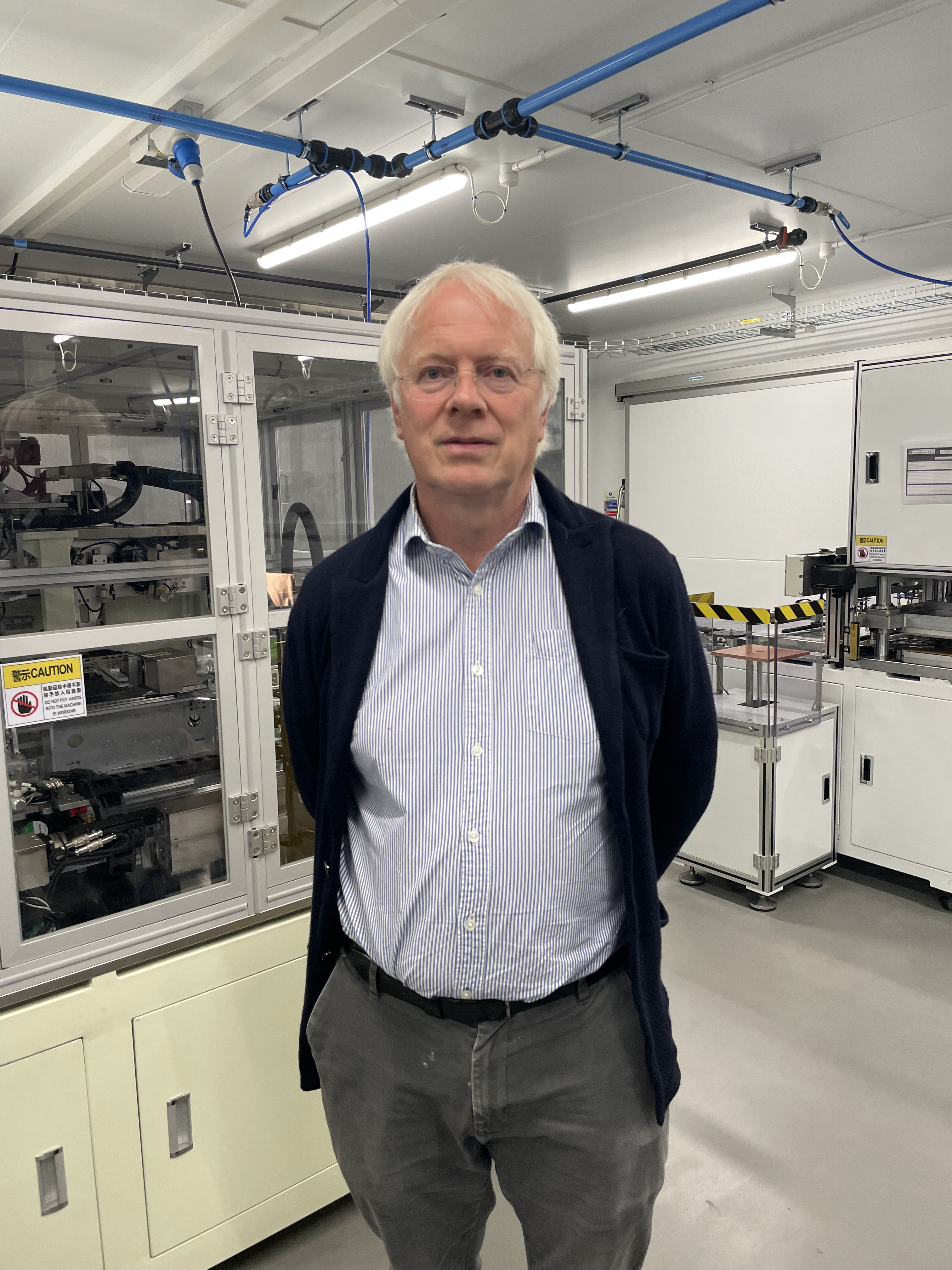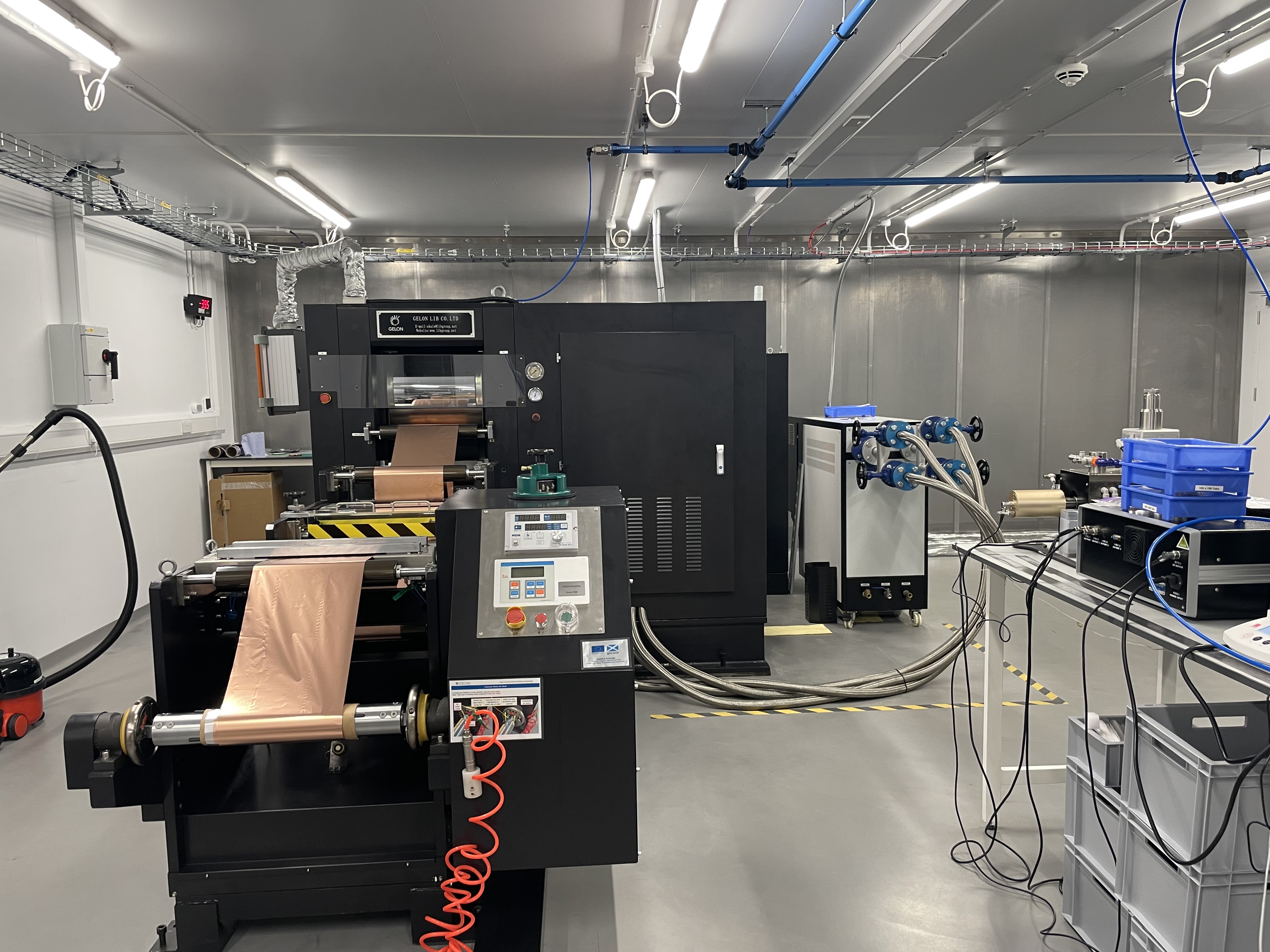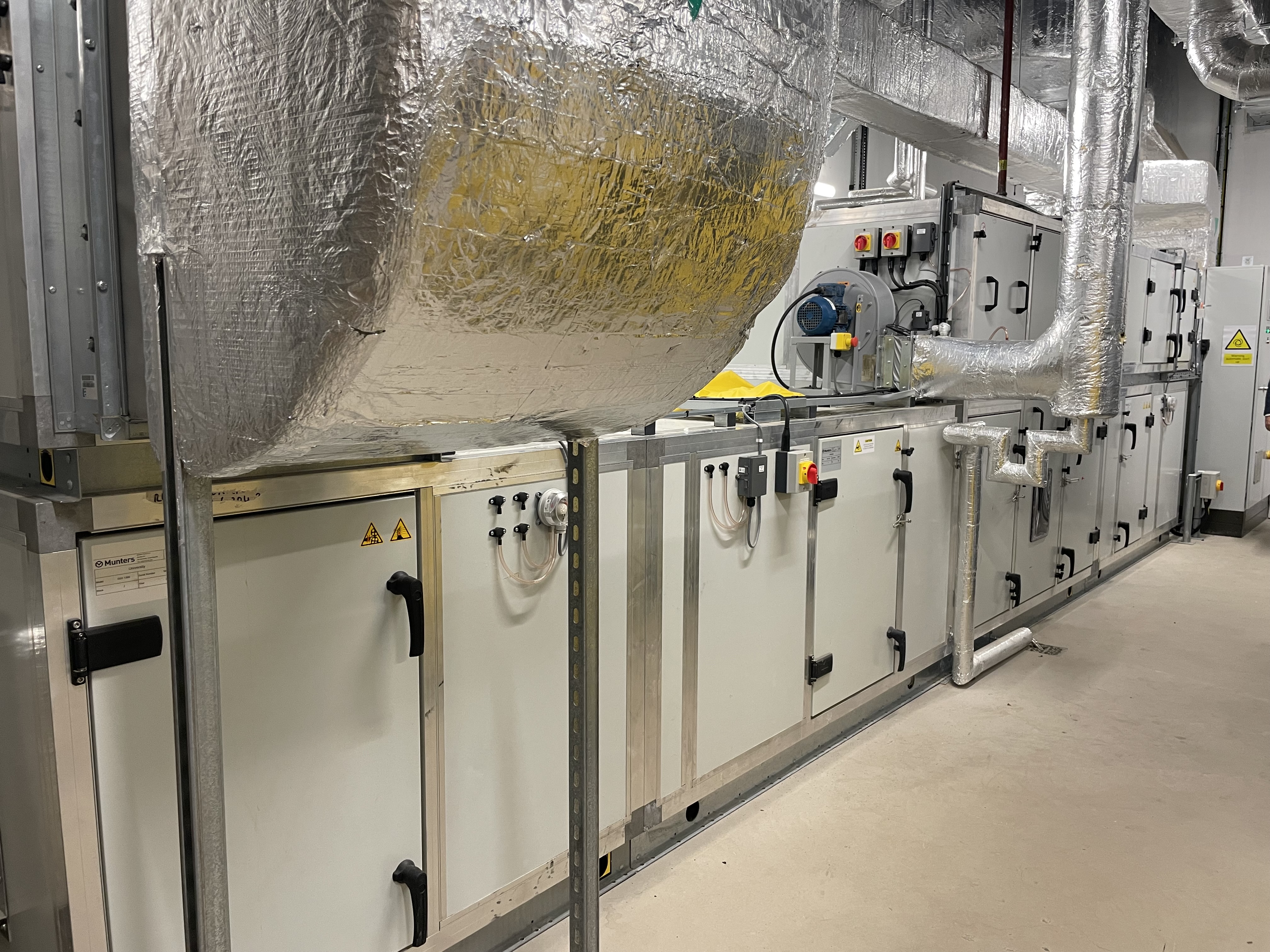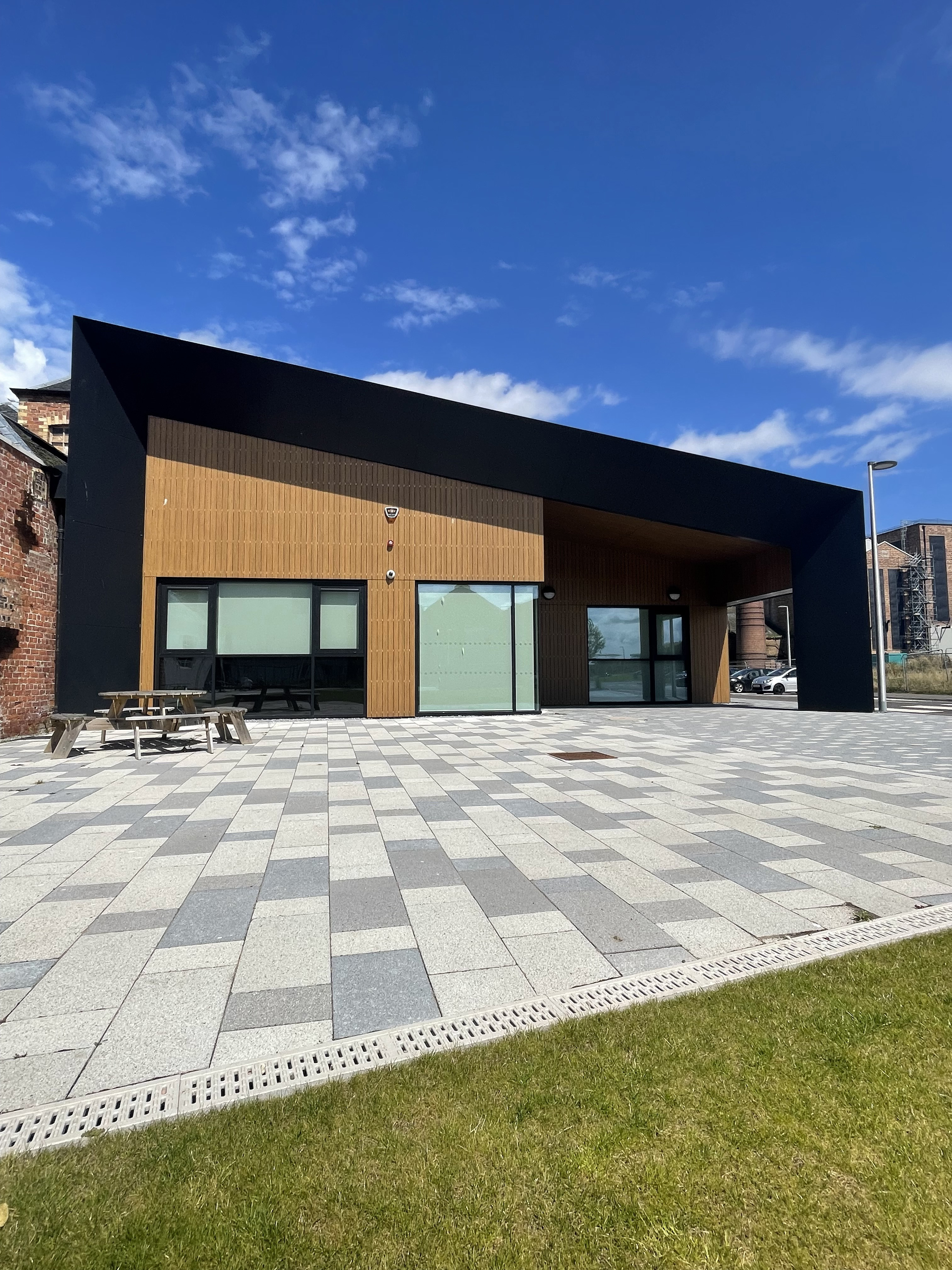The University of St Andrews had a requirement to create a state-of-the-art battery dry room. This facility was designed to achieve precise and ultra-low dewpoint conditions that are critical when working with sensitive chemistries such as lithium and sodium-ion.
Quick facts
- Bespoke turnkey battery dehumidification solution.
- Control relative humidity levels to -40° to -50°C dewpoint.
- Consistently maintain extremely dry conditions to prevent product loss and damage.
- Munters Green PowerPurge reduces reactivation heater power by approximately 30%.
View the case study video Nestled on the banks of the Eden Estuary, four miles north of St Andrews and part of the world-famous University of St Andrews, lies Eden Campus. Originally a distillery in 1855 and later a paper mill, Eden Campus was repurposed by the university in 2010 to become a centre for renewable technologies and innovation. Its aim is to bring together researchers, local businesses, and start-ups to develop smart energy solutions. Within the campus lies the newly built Colin Vincent Centre for Battery Technology, a facility that showcases the university’s world-leading battery research programs. This facility manages the production of commercial-scale batteries, enabling scale-up from research to production scale, firmly placing them at the forefront of research into new battery chemistries. At the heart of this building lies an ultra-low dewpoint battery dry room, designed, supplied, and installed by Munters. This climate-controlled battery dry room is central to their battery research and critical for handling sensitive chemistries such as lithium and sodium-ion.
Project and installation
Munters were approached as a known provider of battery dry room solutions, having seen other similar systems at universities throughout the UK. Working closely with the University, Munters recommended a bespoke turnkey battery dry room that included HVAC plant installation, commissioning and maintenance. The proposal was based on a standard-built dry room being constructed inside a brand new building, later named the Colin Vincent Centre for Battery Technology. The internal dry room area measures approximately 119m2 and typically operates between -40° to -50°C Dewpoint depending on occupancy. Access into the dry room is via an air lock built on the outside of the dry room. This is an important feature that protects room conditions from outside air when people enter and exit the dry room, which is operated effectively through a traffic light system. When considering the requirements for this dry room, it was important to understand the needs of the university and their users now as well as allowing for future developments of chemistries. CFD Modelling was used to help ensure suitable airflow could be achieved around all equipment, and an equipment access door was also installed. “The primary users are small companies seeking to manufacture batteries and take technologies into the gigascale factories” says Professor John Irvine from the University of St Andrews. “ Whilst lithium is very good, there isn’t enough lithium to meet our needs. New chemistries like sodium-ion technology, which produce a lower cost and a more sustainable type of battery, are needed.” The university is also working with a range of companies on various lithium battery technologies. When working with any of these chemistries, having extremely dry conditions within the cell that is manufactured is critical to prevent product loss and damage. Design and sustainability “The dry room at St Andrew university has been designed with a key focus on sustainability” says Jason Bettles, Business Development Manager at Munters. The Munters DSS 1300 that has been installed is equipped with Munters Green Power Purge heat recovery system, which reduces the reactivation heater power by approximately 30%. In addition to this, there is a complimentary water chiller that serves the dehumidification system and is fitted with heat recovery, ”This enables us to utilize waste heat to provide post heating for the dehumidification process.” Working with Munters Professor Irvine continues “Munters has that knowledge base that’s really important. If you’re new to the technology, it’s good to have a stable base that you can come to”. When asked to summarize what it’s like to work with Munters, John stated “The key advantage to working with Munters is they have a proven track record. We’re very happy with what we’ve done with Munters, and would recommend them again.”
Quick facts
- Bespoke turnkey battery dehumidification solution.
- Control relative humidity levels to -40° to -50°C dewpoint.
- Consistently maintain extremely dry conditions to prevent product loss and damage.
- Munters Green PowerPurge reduces reactivation heater power by approximately 30%.




